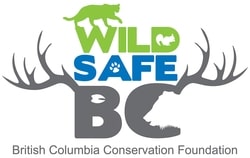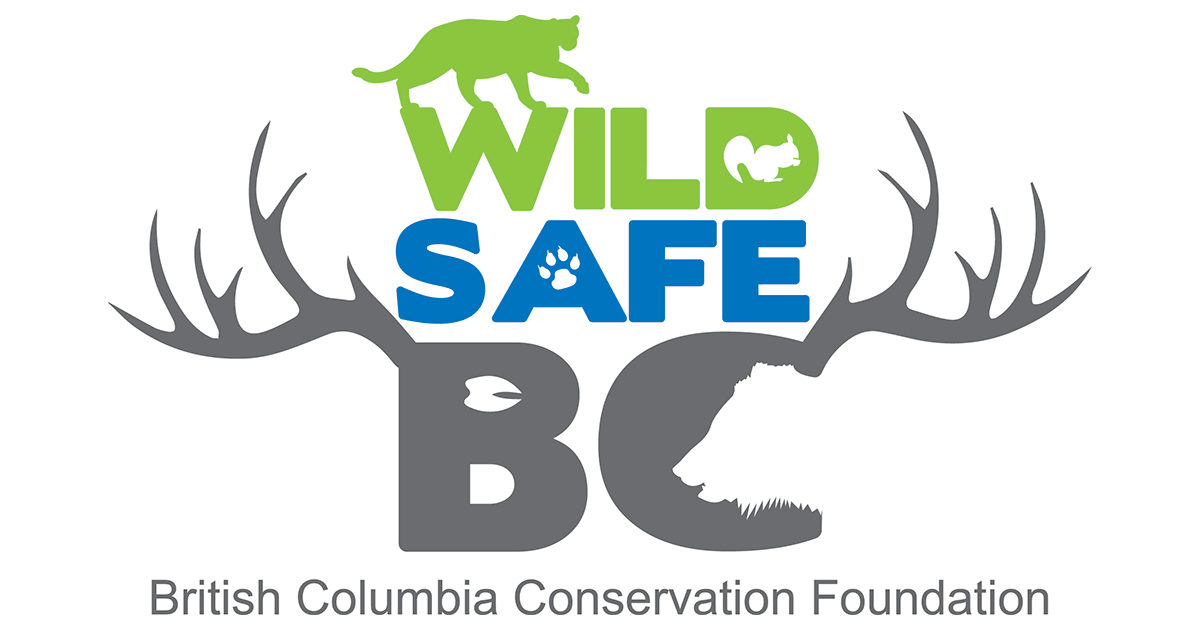American Badgers
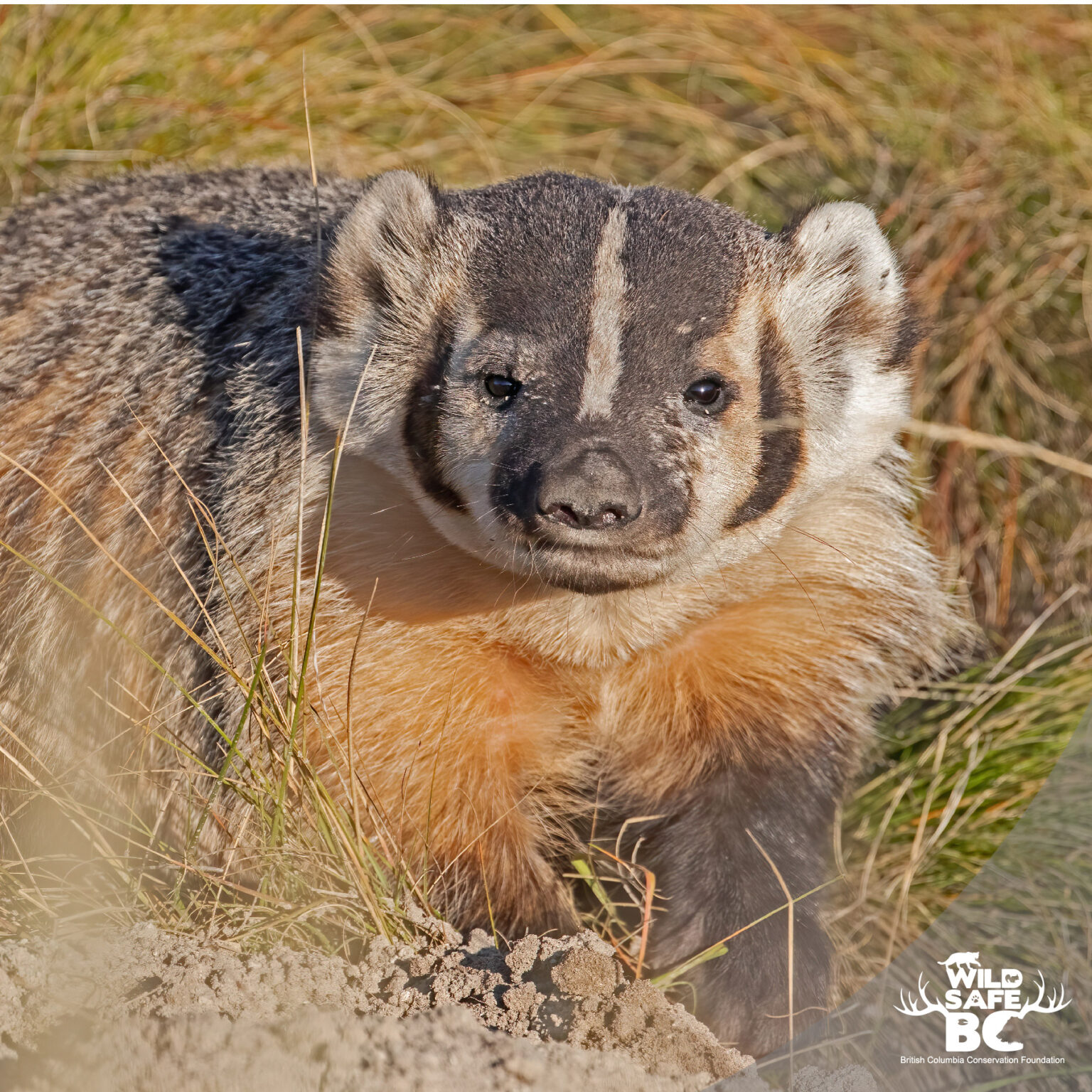 Badger Snapshot
Badger Snapshot
The American Badger (Taxidea taxus jeffersonii) is a small carnivore that lives in the open forests and grasslands of the BC Interior. They belong to the Weasel (or "Mustelid") family and are cousins to wolverines, otters, and pine martens. Badgers have short, squat body, grizzled grey and tan fur, and distinctive black patches on their face. They have long front claws and a very short tail.
American badgers are listed as critically endangered in Canada (COSEWIC) and Red Listed in BC. Badger populations have declined dramatically as a result of vehicle collisions, habitat loss, persecution, and illegal or accidental trapping and poisoning. Because of their highly endangered status, it is illegal to harass, harm, kill, or trap a badger in BC.
Have you seen a badger? Please report all badger sightings and mortalities to BC Badgers! Badgers are highly endangered in BC and reports from the public help provincial biologists learn more about their movements and behaviour.
American Badger Facts
- Badgers are named after the black patches or 'badges' on each side of their face.
- Badgers have been seen on many occasions hunting gophers and ground squirrels cooperatively with a coyote “partner”. The badger digs down into the burrow to get at the prey while the coyote waits at the exits to hunt any escapees.
- To protect their eyes from dirt, badgers have an extra “eyelid”, a clear membrane they can close over their eyes when digging.
- Badgers are the fastest digging mammals on earth and are capable of burrowing up to 1 metre (3 feet) per minute!
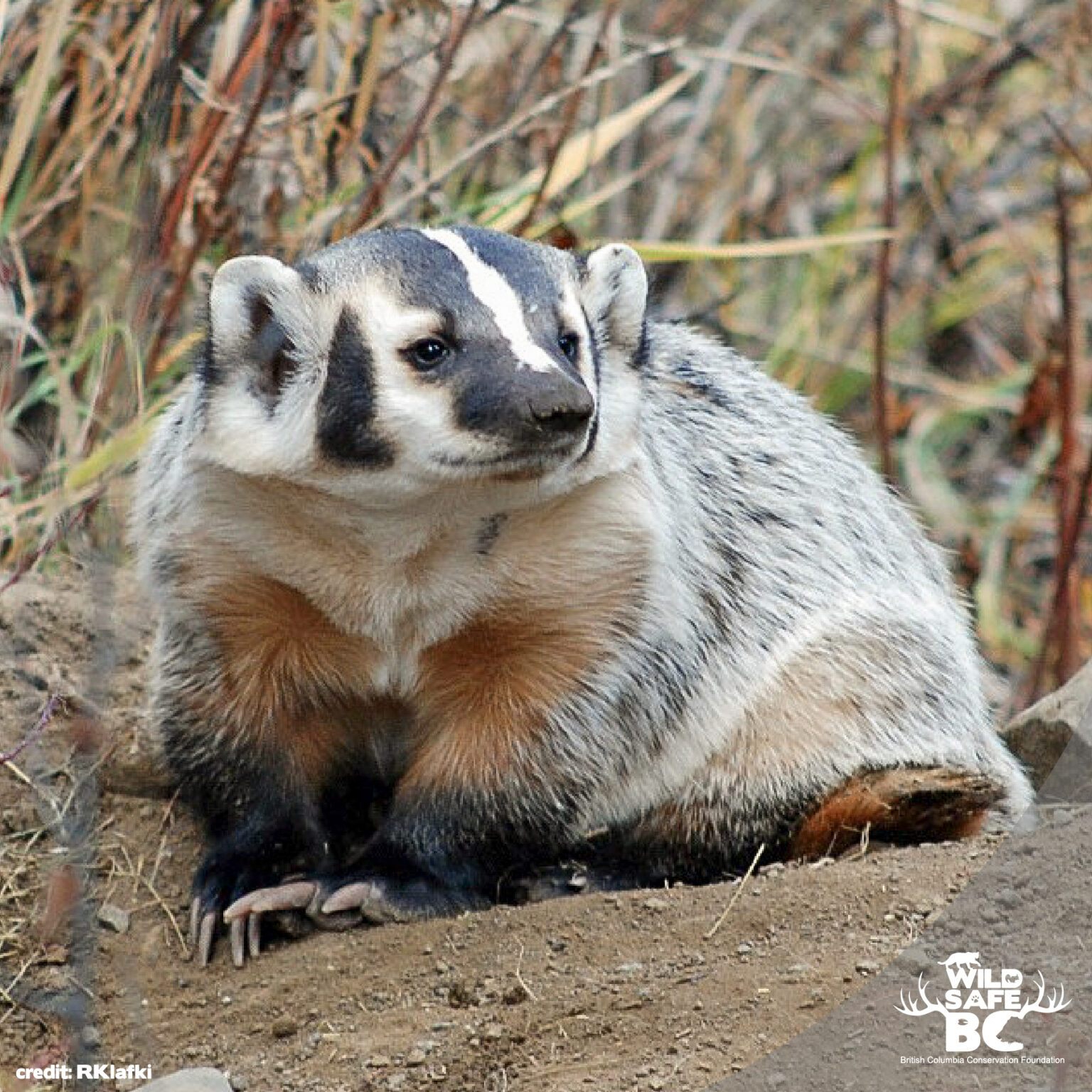 Identification
Identification
Badgers are very short and squat animals, with wide bodies and short, stocky legs. Their coats are a grizzled grey-ish white with tan patches on their chest and neck. Their faces are marked with highly distinctive black and white stripes or “badges”. Badgers are around 60-70 cm long (2-2.5 ft) and weigh about 12 kg (26 lbs), with males often a little bigger than females. Their front paws have exceptionally long claws for digging – often over 5 cm (3 in) long.
Biology
Badgers prey almost entirely on small burrowing mammals and provide can provide excellent natural control of these species. Their preferred prey are Ground Squirrels and Yellow-bellied Marmots, but they also eat other rodents such as gophers and voles, as well as the occasional snake or ground-nesting bird.
Badgers do not reproduce quickly – females don’t often mate in their first season and most will also not mate every year. Males also rarely reproduce until the age of 3 or 4 years. Females also perform ‘delayed implantation’, where they will mate in the fall but the embryo(s) will not implant until the following spring. Female badgers in BC usually only have two kits at a time, though they very rarely can have up to five, and the kits stay with their mother for about 6 months before dispersing to find their own territories. Badgers can live for over 10 years in the wild, but most badgers in BC do not live for more than about 4 years.
The BC subspecies of badgers is highly endangered. It is thought there are fewer than 400 badgers left in the entire province, and in some regions such as the Okanagan Valley, they have nearly disappeared completely. Vehicle collisions and high levels of habitat loss and fragmentation are making it very difficult for BC badgers to recover their populations. It is important to always be on the lookout for wildlife when driving, especially at dawn, dusk, and during the night. If you hit a badger with your vehicle, it is critical that you report the collision to the BC Badgers Team at www.badgers.bc.ca, or you can also call the Conservation Officer Service at 1-877-952-7277.
Behaviour
Badgers tend to be nocturnal and are generally solitary outside of when mothers have their kits. They spend so much time digging their burrows and digging while hunting that they are considered to be a fossorial (underground) mammal. Savvy hunters, they have been routinely observed pushing rocks and large sticks into the exits of ground squirrel burrows before hunting to block their prey’s escape. They are also often observed hunting in cooperation with coyotes; the badger digs down a prey animal’s burrow to try and catch it while the coyote waits to chase it if it comes out of another exit.
Badgers do not fully hibernate in winter. Instead, they will enter periods of torpor (an exceptionally deep sleep) in between periods of activity and hunting. Badgers may be preyed upon by bears, wolves, or cougars, but it is not a common threat.
Range and Habitat
As they spend much of their time digging burrows and digging for prey, badgers need open areas with loose soils which leads them to prefer living in grasslands and sparse, open forests. They can be found in the Cariboo, Thompson-Okanagan, Nicola, East Kootenay, and parts of the Similkameen regions of BC. High levels of urban, agricultural, and highway development in BC’s grassland and open forest habitats have dramatically reduced the amount of suitable habitat for badgers in BC and is a major factor in their decline throughout the province.
Badgers are almost always on the move, with home ranges that can be a few dozen square kilometres for females, to over a hundred square kilometres for some males! This nomadic behaviour means that they cross roads and highways all the time, which is why they are at such risk of being hit by cars.
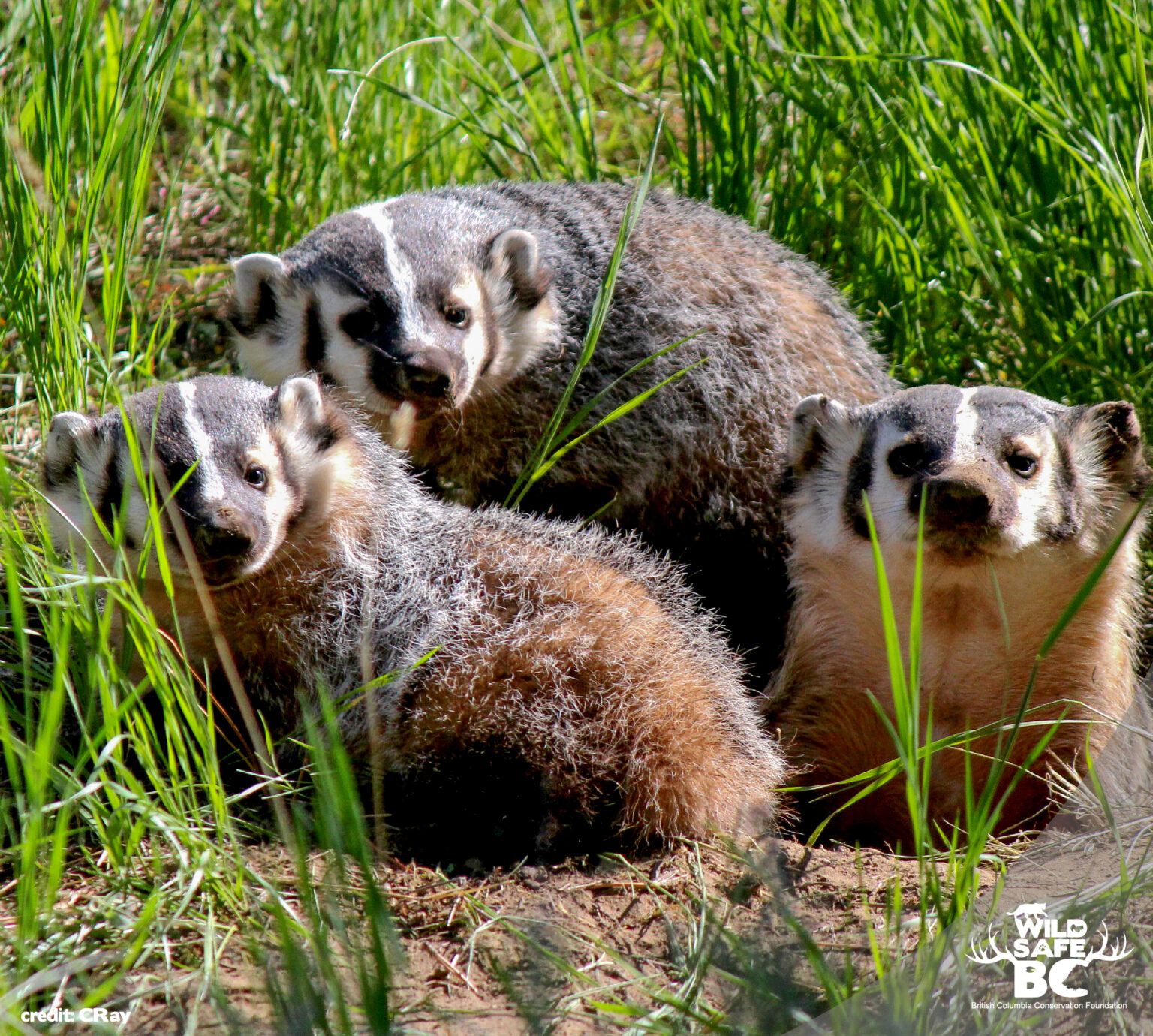 Badger Safety
Badger Safety
As with all wildlife, never feed or approach a badger. A badger that feels threatened may bare its teeth, squeal, hiss, or even growl. Females may be especially protective of their young or the burrow where they are raising their young.
Be aware that other animals such as rattlesnakes or burrowing owls may use abandoned badger burrows. Never place your hands or face near the openings of a burrow.
Maintain your distance from badgers and keep pets away to avoid altercations and injury to both parties. Badgers generally pose very little threat to humans unless they are highly provoked.
Badgers rarely ever carry rabies. It has been only found in badgers on two occasions in Canada- once in 1947 and once in 1973. They can sometimes carry toxoplasmosis and distemper, so it is important to keep pets from interacting with badgers.
Tuberculosis has never been detected in American Badgers and it is believed that they are simply not carriers. No transmission of any disease from badgers to livestock has ever been recorded in North America.
Have you seen a badger? Please report all badger sightings and mortalities to BC Badgers! Badgers are highly endangered in BC and reports from the public help provincial biologists learn more about their movements and behaviour.
Conflict Reduction with Badgers
Human-badger conflicts are rare. American badgers typically only become aggressive when protecting themselves, their burrows, or their young. Badgers may be attracted to human-modified habitats with short grass and abundant vegetation as these can also be attractive to their rodent prey. This can lead to conflicts when badgers establish burrows in a location that humans deem inappropriate. Badgers are most vulnerable to burrow disturbances from May to July when females are raising their kits. As their tunnels may extend 20 metres in length, it is advised to flag a 20 m radius from a burrow entrance to prevent disruption or public safety issues such as machinery parking overtop. Report the burrow's location on the BC Badgers website. Badgers may also be attracted to chicken coops. Consider installing small mesh fencing that extends at least 1 ft underground to prevent the badger from digging into the coop, or electric fencing.
Badgers move burrows frequently, so if there is a badger in an inconvenient location, it will likely move on within a few weeks. Coexisting with badgers can bring benefits as they often help control rodent populations. Badgers are an endangered species in British Columbia, and they are legally protected from being harmed, captured or killed under the BC Wildlife Act. Trapping and relocating badgers is prohibited.
Have you seen a badger? Please report all badger sightings and mortalities to BC Badgers! Badgers are highly endangered in BC and reports from the public help provincial biologists learn more about their movements and behaviour.
 Badger Snapshot
Badger Snapshot
The American Badger (Taxidea taxus jeffersonii) is a small carnivore that lives in the open forests and grasslands of the BC Interior. They belong to the Weasel (or "Mustelid") family and are cousins to wolverines, otters, and pine martens. Badgers have short, squat body, grizzled grey and tan fur, and distinctive black patches on their face. They have long front claws and a very short tail.
American badgers are listed as critically endangered in Canada (COSEWIC) and Red Listed in BC. Badger populations have declined dramatically as a result of vehicle collisions, habitat loss, persecution, and illegal or accidental trapping and poisoning. Because of their highly endangered status, it is illegal to harass, harm, kill, or trap a badger in BC.
Have you seen a badger? Please report all badger sightings and mortalities to BC Badgers! Badgers are highly endangered in BC and reports from the public help provincial biologists learn more about their movements and behaviour.
American Badger Facts
- Badgers are named after the black patches or 'badges' on each side of their face.
- Badgers have been seen on many occasions hunting gophers and ground squirrels cooperatively with a coyote “partner”. The badger digs down into the burrow to get at the prey while the coyote waits at the exits to hunt any escapees.
- To protect their eyes from dirt, badgers have an extra “eyelid”, a clear membrane they can close over their eyes when digging.
- Badgers are the fastest digging mammals on earth and are capable of burrowing up to 1 metre (3 feet) per minute!
 Identification
Identification
Badgers are very short and squat animals, with wide bodies and short, stocky legs. Their coats are a grizzled grey-ish white with tan patches on their chest and neck. Their faces are marked with highly distinctive black and white stripes or “badges”. Badgers are around 60-70 cm long (2-2.5 ft) and weigh about 12 kg (26 lbs), with males often a little bigger than females. Their front paws have exceptionally long claws for digging – often over 5 cm (3 in) long.
Biology
Badgers prey almost entirely on small burrowing mammals and provide can provide excellent natural control of these species. Their preferred prey are Ground Squirrels and Yellow-bellied Marmots, but they also eat other rodents such as gophers and voles, as well as the occasional snake or ground-nesting bird.
Badgers do not reproduce quickly – females don’t often mate in their first season and most will also not mate every year. Males also rarely reproduce until the age of 3 or 4 years. Females also perform ‘delayed implantation’, where they will mate in the fall but the embryo(s) will not implant until the following spring. Female badgers in BC usually only have two kits at a time, though they very rarely can have up to five, and the kits stay with their mother for about 6 months before dispersing to find their own territories. Badgers can live for over 10 years in the wild, but most badgers in BC do not live for more than about 4 years.
The BC subspecies of badgers is highly endangered. It is thought there are fewer than 400 badgers left in the entire province, and in some regions such as the Okanagan Valley, they have nearly disappeared completely. Vehicle collisions and high levels of habitat loss and fragmentation are making it very difficult for BC badgers to recover their populations. It is important to always be on the lookout for wildlife when driving, especially at dawn, dusk, and during the night. If you hit a badger with your vehicle, it is critical that you report the collision to the BC Badgers Team at www.badgers.bc.ca, or you can also call the Conservation Officer Service at 1-877-952-7277.
Behaviour
Badgers tend to be nocturnal and are generally solitary outside of when mothers have their kits. They spend so much time digging their burrows and digging while hunting that they are considered to be a fossorial (underground) mammal. Savvy hunters, they have been routinely observed pushing rocks and large sticks into the exits of ground squirrel burrows before hunting to block their prey’s escape. They are also often observed hunting in cooperation with coyotes; the badger digs down a prey animal’s burrow to try and catch it while the coyote waits to chase it if it comes out of another exit.
Badgers do not fully hibernate in winter. Instead, they will enter periods of torpor (an exceptionally deep sleep) in between periods of activity and hunting. Badgers may be preyed upon by bears, wolves, or cougars, but it is not a common threat.
Range and Habitat
As they spend much of their time digging burrows and digging for prey, badgers need open areas with loose soils which leads them to prefer living in grasslands and sparse, open forests. They can be found in the Cariboo, Thompson-Okanagan, Nicola, East Kootenay, and parts of the Similkameen regions of BC. High levels of urban, agricultural, and highway development in BC’s grassland and open forest habitats have dramatically reduced the amount of suitable habitat for badgers in BC and is a major factor in their decline throughout the province.
Badgers are almost always on the move, with home ranges that can be a few dozen square kilometres for females, to over a hundred square kilometres for some males! This nomadic behaviour means that they cross roads and highways all the time, which is why they are at such risk of being hit by cars.
 Badger Safety
Badger Safety
As with all wildlife, never feed or approach a badger. A badger that feels threatened may bare its teeth, squeal, hiss, or even growl. Females may be especially protective of their young or the burrow where they are raising their young.
Be aware that other animals such as rattlesnakes or burrowing owls may use abandoned badger burrows. Never place your hands or face near the openings of a burrow.
Maintain your distance from badgers and keep pets away to avoid altercations and injury to both parties. Badgers generally pose very little threat to humans unless they are highly provoked.
Badgers rarely ever carry rabies. It has been only found in badgers on two occasions in Canada- once in 1947 and once in 1973. They can sometimes carry toxoplasmosis and distemper, so it is important to keep pets from interacting with badgers.
Tuberculosis has never been detected in American Badgers and it is believed that they are simply not carriers. No transmission of any disease from badgers to livestock has ever been recorded in North America.
Have you seen a badger? Please report all badger sightings and mortalities to BC Badgers! Badgers are highly endangered in BC and reports from the public help provincial biologists learn more about their movements and behaviour.
Conflict Reduction with Badgers
Human-badger conflicts are rare. American badgers typically only become aggressive when protecting themselves, their burrows, or their young. Badgers may be attracted to human-modified habitats with short grass and abundant vegetation as these can also be attractive to their rodent prey. This can lead to conflicts when badgers establish burrows in a location that humans deem inappropriate. Badgers are most vulnerable to burrow disturbances from May to July when females are raising their kits. As their tunnels may extend 20 metres in length, it is advised to flag a 20 m radius from a burrow entrance to prevent disruption or public safety issues such as machinery parking overtop. Report the burrow's location on the BC Badgers website. Badgers may also be attracted to chicken coops. Consider installing small mesh fencing that extends at least 1 ft underground to prevent the badger from digging into the coop, or electric fencing.
Badgers move burrows frequently, so if there is a badger in an inconvenient location, it will likely move on within a few weeks. Coexisting with badgers can bring benefits as they often help control rodent populations. Badgers are an endangered species in British Columbia, and they are legally protected from being harmed, captured or killed under the BC Wildlife Act. Trapping and relocating badgers is prohibited.
Have you seen a badger? Please report all badger sightings and mortalities to BC Badgers! Badgers are highly endangered in BC and reports from the public help provincial biologists learn more about their movements and behaviour.
